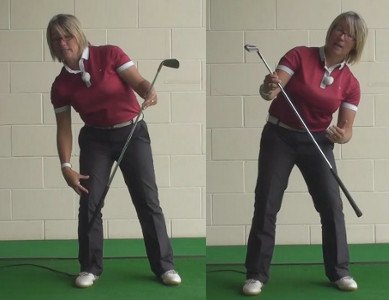
It is really important to understand how elevation changes affect ball flight when playing golf shots because all golf courses will have some degree of elevation change on them.
Let us consider the effect that elevation changes have.
If you are playing a shot that is going to land on an area much lower than you are playing from, the ball will be landing more vertically than usual so it stops much more quickly and will not run forward. Playing to a lower surface will also mean that the golf ball will have an extended flight time in the air and therefore fly further than usual. To allow for this, when playing to an area lower than you are hitting from, use less club. If you would usually hit a 7 iron for the distance you are faced with, hit an 8 or even 9 iron, depending on the amount of elevation change.
If you are playing the shot from a downhill slope you also need to set up slightly differently from a shot played from a horizontal, flatter lie position. When playing from a flat lie you set up with your spine perpendicular to the ground and with your weight evenly spread between your left and right foot. When on a slope you need to recreate the same relationship between your spine and the ground. To achieve this, tilt your spine until it becomes perpendicular to the ground and your shoulders reflect the angle of the ground you are stood on. This will now result in more weight being placed on your lower foot. Work on holding this spine position as you swing the club so that the club head moves up the slope angle as you swing back and then down with the slope angle as you hit the ball and follow through. Have the ball slightly towards your higher foot to help you strike well. A shot from this type of slope will always fly slightly lower than usual, another reason to use a club with more loft and it will tend to swing left to right in the air, due to the effect that the slope is having on your movement and the club, so aim left to allow for this.
Playing shots to areas that are higher than you are hitting from, is opposite to this. The ball is not in the air or in it's trajectory for as long as usual, due to the up slope. The ball will land earlier than usual so it will not fly as far as normal. Take more club to play your shot to allow for this. Instead of using a 7 iron, take a 6 or 5 iron. Also think of the slope you are hitting from, an uphill slope is like a launch pad for the ball to fly upwards so you need less loft for this reason. With the downhill slope, set up so your spine is perpendicular to the floor. Place your weight on your lower foot and the ball towards your higher foot. The ball will tend to fly right to left because of the effect that the slope is having on your swing so aim to the right – how much depends on the severity of the slope.






